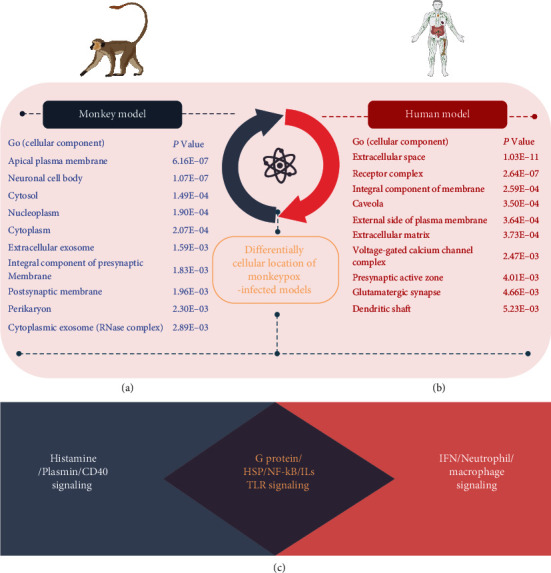Figure 5.

Major characteristics of Gene Ontology (GO) and cellular component annotations are inferred from highly expressed genes shared by the monkeypox-infected Macaca mulatta kidney epithelial (MK2) cell model and the human immortal epithelial cancer (HeLa) cell model. (a) Top highly enriched GO cellular components in the MK2 model. (b) Top highly enriched GO cellular components in the HeLa model. (c) Conclusion of enriched maps discovered by bioinformatic analysis of upregulated genes from the MK2 and HeLa models. The data revealed that interleukins (ILs), G protein-coupled receptors (GPCRs), heat shock proteins (HSPs), Toll-like receptors (TLRs), and metabolic-related pathways were the elevated expression of both monkeypox-infected monkey and human cell lines. Besides, cluster of differentiation 40 (CD40), plasmin, and histamine serve as major regulators in the monkeypox-infected monkey cell line model, while interferons (IFNs), macrophages, and neutrophil-related signaling dominate the monkeypox-infected human cell line model.
